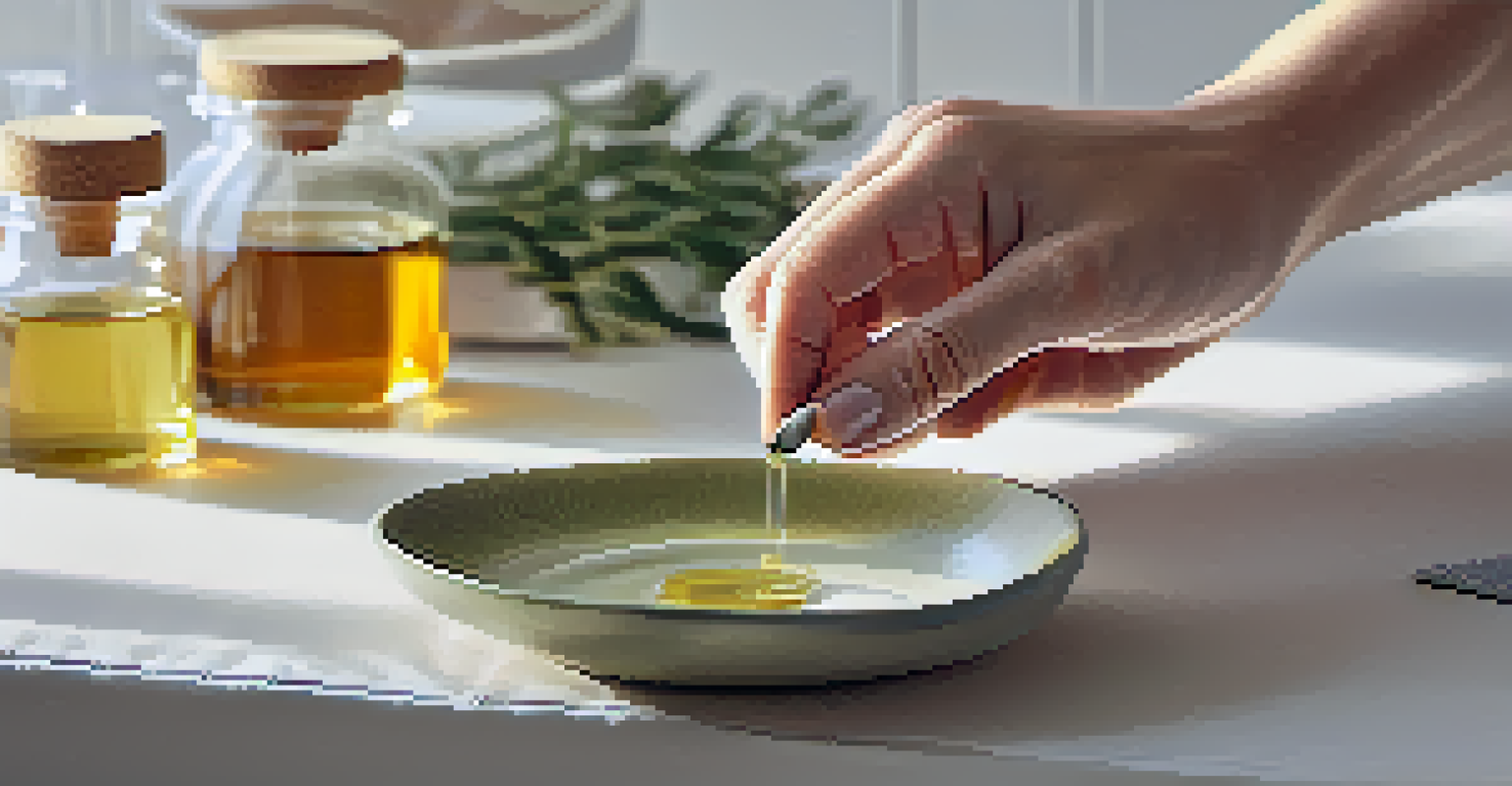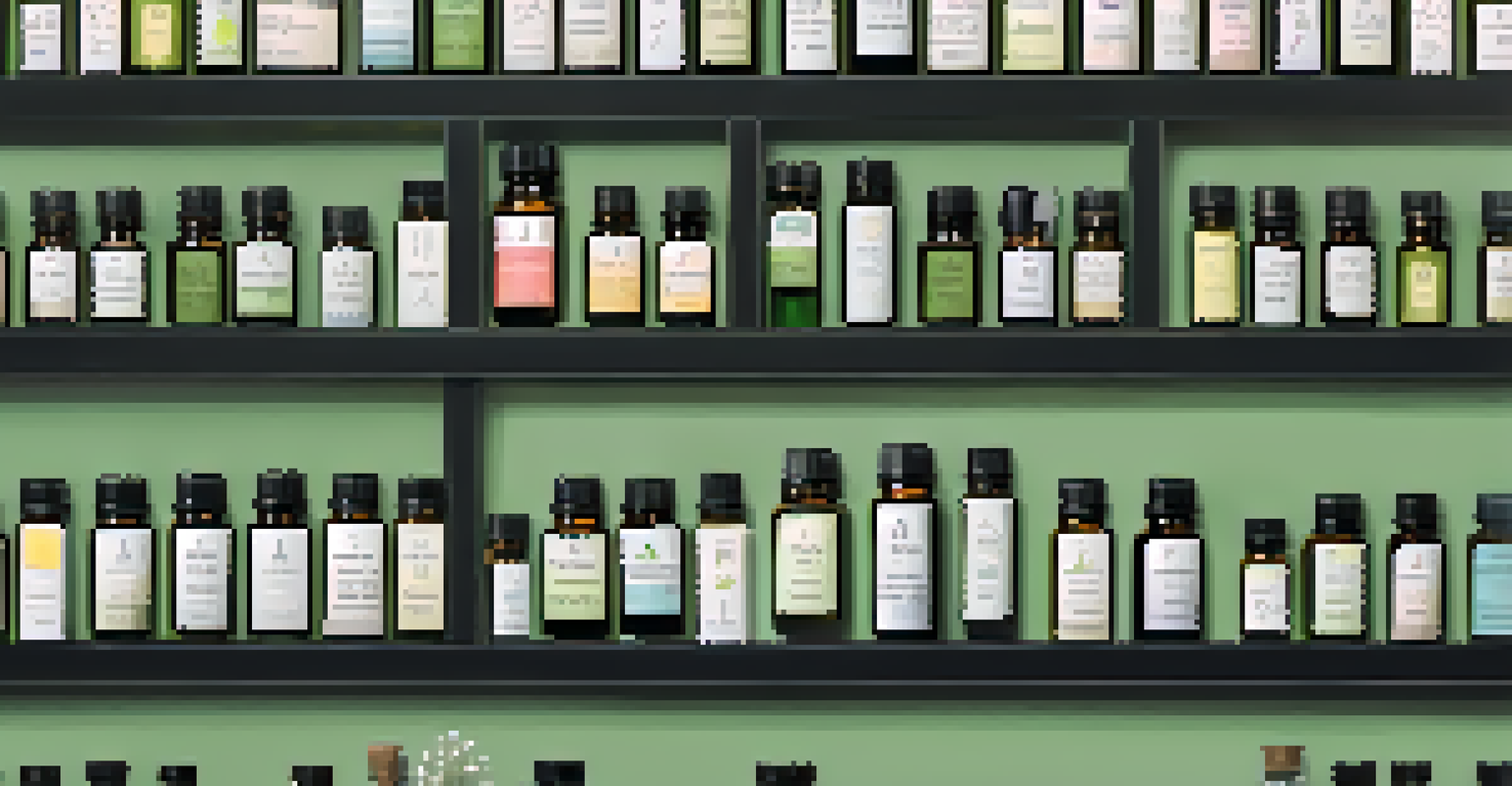Guidelines for Safe Use of Essential Oils in Naturopathy

Understanding Essential Oils and Their Uses
Essential oils are concentrated extracts from plants, known for their aromatic and therapeutic properties. In naturopathy, these oils are often used to promote physical and emotional well-being. However, it's essential to understand the proper use of these potent substances to avoid adverse effects.
Essential oils are the most powerful medicines on earth. They have the ability to heal the body, mind, and spirit.
Each essential oil has unique properties and potential benefits, ranging from relaxation to pain relief. For example, lavender oil is commonly used for its calming effects, while tea tree oil is praised for its antibacterial properties. Knowing the specific uses of each oil helps practitioners choose the right one for their client's needs.
Despite their natural origin, essential oils can be powerful and sometimes irritating. Therefore, it's crucial to approach their use with caution and respect, ensuring safe practices are followed.
Conducting a Patch Test Before Use
Before applying essential oils on the skin, conducting a patch test is an essential safety step. This involves diluting a drop of the oil with a carrier oil, such as coconut or jojoba, and applying it to a small area of the skin. Monitoring for any adverse reactions helps ensure the oil is safe for individual use.

A patch test is particularly important for those with sensitive skin or allergies. Even if an essential oil is generally regarded as safe, individual reactions may vary. By taking this extra step, practitioners can prevent unwanted irritation or allergic responses.
Essential Oils Require Caution
Proper understanding and usage of essential oils are crucial to avoid potential adverse effects.
Incorporating a patch test into the routine not only protects clients but also builds trust. Clients appreciate when practitioners prioritize their safety and well-being, leading to a more effective and enjoyable experience.
Dilution: Why It’s Crucial for Safe Use
Diluting essential oils is a fundamental practice that ensures safety and efficacy. Essential oils are highly concentrated, meaning a little goes a long way. Mixing them with a carrier oil can help reduce the risk of skin irritation and enhance absorption.
Safety is not just a priority; it's a way of life when working with essential oils.
For instance, a typical dilution ratio for adults is 2-3 drops of essential oil per teaspoon of carrier oil. This ratio can vary depending on the oil's potency and the individual's skin sensitivity. Understanding these nuances allows practitioners to customize treatments effectively.
Dilution not only protects the skin but also allows for a more controlled application. Using diluted oils means clients can enjoy the benefits without the fear of adverse reactions, making the experience more enjoyable.
Avoiding Certain Essential Oils for Specific Conditions
Some essential oils can pose risks for individuals with specific health conditions. For example, peppermint oil may not be suitable for individuals with gastroesophageal reflux disease (GERD), as it can exacerbate symptoms. Being aware of these contraindications is crucial for safe practice.
Pregnant or breastfeeding women also need to be cautious. Some oils, like clary sage, can induce contractions or affect hormonal balance. Always consulting reliable resources or experts ensures that practitioners make informed decisions.
Dilution Ensures Safe Application
Diluting essential oils with carrier oils is essential to minimize skin irritation and enhance safety.
By understanding the limitations and risks associated with certain oils, practitioners can provide a safer and more effective experience for their clients. This knowledge reinforces the commitment to holistic health and well-being.
Storing Essential Oils Properly for Longevity
Proper storage of essential oils is vital for maintaining their potency and safety. Exposure to light, heat, and air can degrade the quality of the oils over time. Keeping them in dark glass bottles and in a cool, dry place helps preserve their beneficial properties.
For instance, citrus oils like lemon and orange are particularly sensitive to light and should be stored in amber or cobalt blue bottles. This simple step can extend the shelf life of essential oils, ensuring they remain effective for use.
Educating clients on how to store their oils properly also adds value to the service. Clients are more likely to appreciate and utilize the oils when they understand how to care for them, leading to better outcomes.
Using Essential Oils in Diffusers Safely
Diffusing essential oils can create a calming atmosphere, but safety precautions are essential. It's important to use a diffuser designed for essential oils and to follow the manufacturer's recommendations on how much oil to use. Overusing oils in a diffuser can lead to overwhelming scents and potential respiratory irritation.
A good rule of thumb is to start with 3-5 drops of oil in the diffuser and adjust according to personal preference. Additionally, ensuring proper ventilation in the room helps maintain a comfortable environment for everyone present.
Consult Experts for Best Practices
Consulting with qualified professionals can provide tailored guidance for safe and effective essential oil use.
Encouraging clients to be mindful of their diffusing habits can enhance their experience. By sharing tips on safe use, practitioners promote a relaxing atmosphere while prioritizing safety.
Consulting with Professionals for Guidance
When in doubt about essential oil use, consulting with a qualified naturopath or aromatherapist is always a wise choice. These professionals have the knowledge and experience to guide safe and effective use tailored to individual needs. Their expertise can significantly enhance the benefits of essential oils.
For example, a practitioner may recommend specific oils based on a client's health history or individual preferences. This personalized approach ensures that clients receive the most suitable treatment, maximizing the potential benefits.

Establishing a relationship with a professional not only provides safety but also fosters a sense of community. Clients feel supported in their wellness journey when they know they can reach out for advice and information.